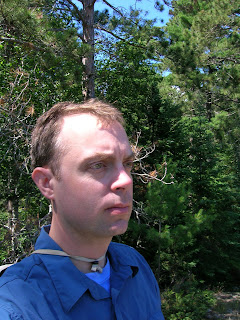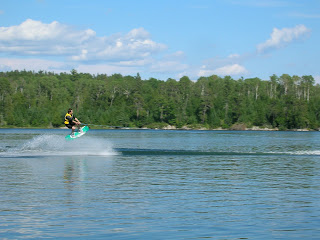
Birdwatching is exciting for many different reasons, and one of the most alluring is the possibility of encountering something unusual. Because birds have wings and are highly mobile, this can happen just about anywhere, at any time. Discovering something new, something rare, something seldom seen is a big part of what drives us out into the field, whether to the little park down the road or to the ends of the earth.
It can be all too easy to fall completely into this mindset and start ignoring the normal, run-of-the-mill birds that we see all the time. The robins, the chickadees, the crows, the cardinals. The yellow-rumped warblers, the mallards, the red-winged blackbird. The starling, the house sparrow. It's understandable, of course. We see them all the time, and though we don't exactly dislike them, if we catch them in our binocular's field of view we say "Oh, it's just a robin," and quickly move on.
One of the best ways to increase your skills at finding new and unusual birds, however, in fact the best way to train yourself to recognize them when you see them, is to watch your everyday birds carefully: watch how they fly, listen to what they say, notice where they go in the spring, what they do in the winter, who they associate with, how they're plumage varies, and so on and so on. Keep your eyes on them! Knowing a black-capped chickadee inside and out means you'll be that much closer to actually noticing that one bird or flock that seems a bit off, the call note a little strange, and the color of the cap not quite right, and realizing that it's not a black-capped at all, but a boreal chickadee.
This is particularly useful in the realm of bird songs and calls. Many of our most common denizens have several different vocalizations that can be confusing for years and years, long after you've developed the skill to identify them by sight from two hundred yards away in dim light. Think of the robin, with its variable song, its woodpecker-like whinny, its understated call note and its rhythmic chuffing that follows. Following one robin around and watching it while it goes through its little library of songs is very helpful in making sense of the constant chatter you hear all around you.
Getting in the habit of ignoring birds leads to ignoring birds, period, whether they be rare or common. And beyond that, of course, watching birds closely, any birds, is interesting. They all have unique ways of behaving and interacting with the world around them that will lead to understanding and insight above and beyond identification and bird-finding skills. And spending time watching your most familiar neighbors might just lead to a new appreciation and respect for these fellows that have the resiliency to thrive amidst this very altered landscape that we've created. And and just maybe, that will even lead to insights into...ourselves.


















































